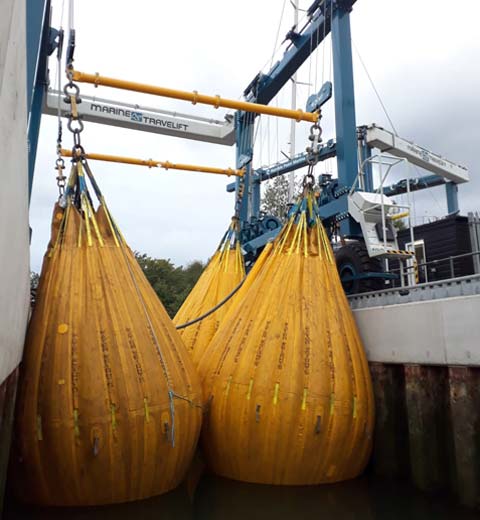Material handling, particularly in industries such as construction, manufacturing, and logistics, often involves the lifting and movement of heavy loads using cranes, hoists, and other lifting equipment. Ensuring the safety and efficiency of these operations is paramount to avoid accidents, damage to equipment, and potential disruptions to workflow. One crucial practice that contributes significantly to achieving these goals is load testing before lifting. In this article, we will explore the importance of load testing, its benefits, and how it plays a pivotal role in making material handling easier and safer.
Understanding Load Testing:
Load testing involves subjecting lifting equipment to simulated operational conditions to assess its performance and verify its compliance with safety standards. The primary objective is to ensure that the equipment can safely handle the intended load without malfunctioning or compromising safety during lifting operations.

Key Benefits of Load Testing Before Lifting:
-
Safety Assurance: The foremost benefit of load testing is the assurance of safety. By determining the weight-bearing capacity of lifting equipment, load testing helps prevent overloading, a common cause of accidents in material handling. It ensures that the equipment can handle the specified load without compromising structural integrity.
-
Equipment Reliability: Load testing provides insights into the reliability of lifting equipment. Identifying potential issues, such as hydraulic system malfunctions or structural weaknesses, before actual operations begin allows for timely repairs and maintenance. This proactive approach minimizes the risk of equipment failure during critical lifting tasks.
-
Compliance with Standards: Load testing is a crucial component of compliance with industry regulations and safety standards. Many regulatory bodies mandate load testing for lifting equipment to ensure that it meets the required performance criteria. Complying with these standards not only enhances safety but also protects businesses from legal and financial liabilities.
-
Prevention of Equipment Damage: Overloading or using lifting equipment beyond its capacity can lead to severe damage, affecting not only the equipment itself but also the materials being lifted. Load testing helps prevent such damage by ensuring that the equipment is suitable for the intended load, preserving the integrity of both the equipment and the materials being handled.
The Load Testing Process:
-
Establishing Load Parameters: Before conducting a load test, it's essential to determine the maximum load that the lifting equipment is expected to handle during regular operations. This includes considering factors such as the weight of the load, the angle of lift, and any dynamic forces that may come into play.
-
Conducting the Load Test: Load testing involves applying incremental loads to the lifting equipment and assessing its response at each stage. This may include lifting the load to a certain height, holding it for a specified duration, and observing the equipment's stability and performance. The test is typically performed with a load that exceeds the expected maximum operational load.
-
Analyzing Results and Certification: The data collected during the load test is analyzed to ensure that the equipment performed within acceptable parameters. If the equipment passes the test, it is certified as safe for operation. In cases where issues are identified, necessary repairs and adjustments are made, and the equipment is retested.
Final thoughts:
Load testing before lifting is a critical practice that contributes to the overall safety, reliability, and efficiency of material handling operations. By proactively assessing lifting equipment's capacity and performance, businesses can prevent accidents, protect their assets, and ensure compliance with safety standards. Embracing load testing as a standard practice in material handling operations is not just a regulatory requirement; it is a proactive measure that establishes a foundation for a safer and more efficient workplace.

No comments yet